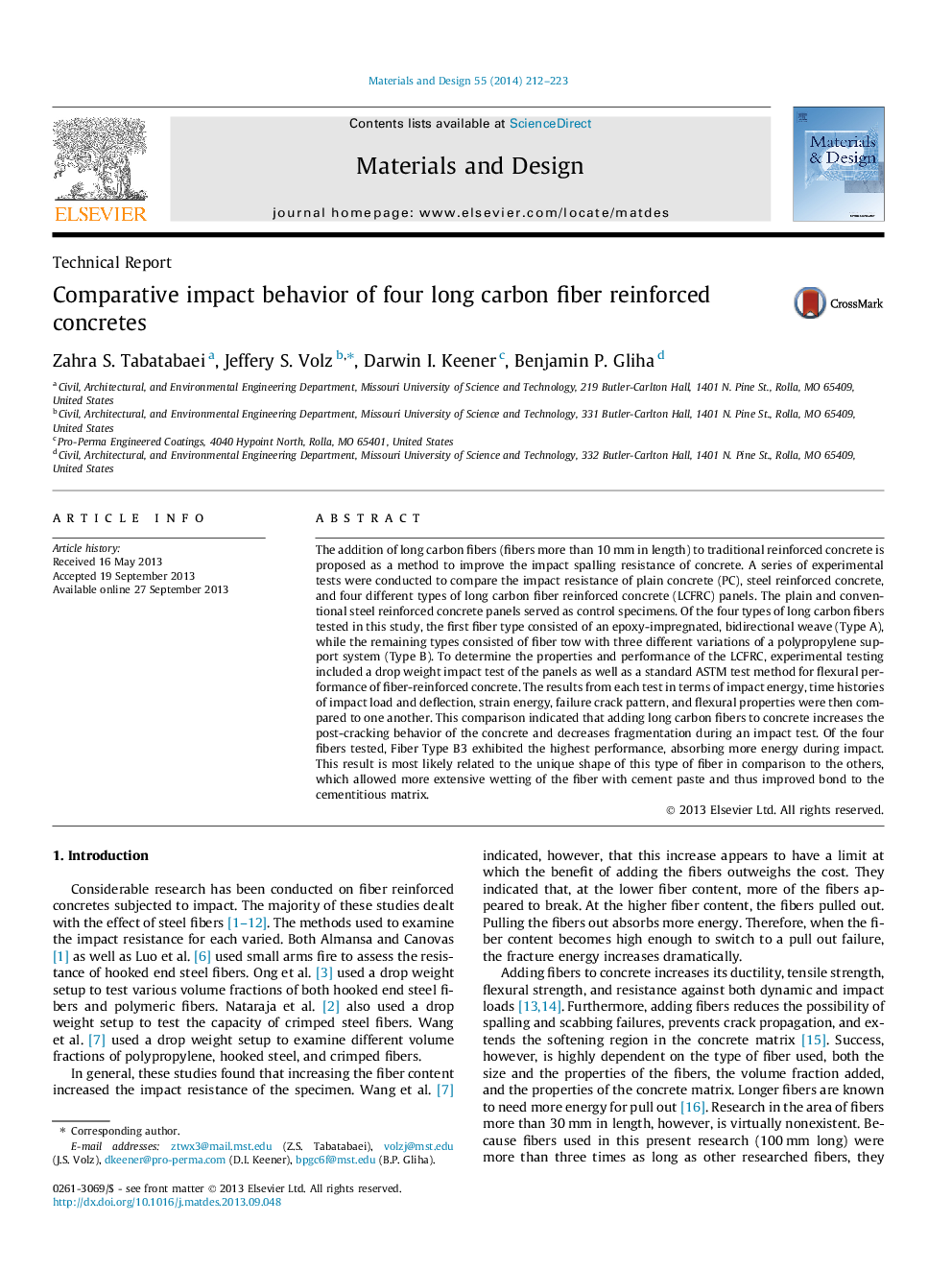| کد مقاله | کد نشریه | سال انتشار | مقاله انگلیسی | نسخه تمام متن |
|---|---|---|---|---|
| 829528 | 1470342 | 2014 | 12 صفحه PDF | دانلود رایگان |
• Investigate the comparative behavior of four different types of long carbon fibers on the impact resistance of concrete.
• Find a relationship between impact energy and panel deformation.
• Investigate the failure mode of long carbon fiber reinforced concrete.
The addition of long carbon fibers (fibers more than 10 mm in length) to traditional reinforced concrete is proposed as a method to improve the impact spalling resistance of concrete. A series of experimental tests were conducted to compare the impact resistance of plain concrete (PC), steel reinforced concrete, and four different types of long carbon fiber reinforced concrete (LCFRC) panels. The plain and conventional steel reinforced concrete panels served as control specimens. Of the four types of long carbon fibers tested in this study, the first fiber type consisted of an epoxy-impregnated, bidirectional weave (Type A), while the remaining types consisted of fiber tow with three different variations of a polypropylene support system (Type B). To determine the properties and performance of the LCFRC, experimental testing included a drop weight impact test of the panels as well as a standard ASTM test method for flexural performance of fiber-reinforced concrete. The results from each test in terms of impact energy, time histories of impact load and deflection, strain energy, failure crack pattern, and flexural properties were then compared to one another. This comparison indicated that adding long carbon fibers to concrete increases the post-cracking behavior of the concrete and decreases fragmentation during an impact test. Of the four fibers tested, Fiber Type B3 exhibited the highest performance, absorbing more energy during impact. This result is most likely related to the unique shape of this type of fiber in comparison to the others, which allowed more extensive wetting of the fiber with cement paste and thus improved bond to the cementitious matrix.
Journal: Materials & Design - Volume 55, March 2014, Pages 212–223
